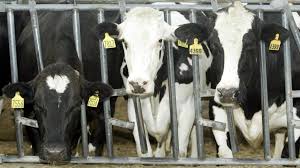Michigan Identifies Second Case of H5N1 Bird Flu Transmission from Cows to Humans
On Wednesday, May 22, In Michigan, the Centers for Disease Control and Prevention (CDC) announced the discovery of a second H5N1 bird flu infection in humans within the country. This second case connected to the ongoing H5N1 pandemic in dairy cows across nine states was identified in Michigan.
The announcement was made only a few weeks after the CDC determined that a cow in Texas may have infected a human some months earlier. Both were employed at dairy farms and had frequent contact with animals that were afflicted.
Eye Infection Rather Than Respiratory Disease
There are some important facts to this unfolding story, however they are disturbing. The two human cases have only shown minor symptoms, such as conjunctivitis, or eye infections. Both of them tested negative for influenza using the conventional diagnostic procedure, a nasal swab. But in the second Michigan instance, an eye swab—a less common test—confirmed the presence of the H5N1 virus.
This points to a distinct method of transmission than the usual influenza-related respiratory disease. Although the precise mechanism of transmission is still being looked into by health officials, it’s probable that the virus got into the eye through contact with infected dust or dung.
Not Consumers, But Dairy Cow Outbreak
Fortunately, there haven’t been any documented instances of H5N1 infection spreading to people by eating dairy products. According to the CDC, the risk of H5N1 in milk is effectively eliminated by the current safety procedures for handling and processing milk.
Farmworkers who come into close touch with diseased animals are the ones that need to be taken seriously. The likelihood of further human cases among agricultural workers is increased by the high viral concentration in affected cows. The CDC is pushing owners of dairy farms to take stringent steps to reduce worker exposure to biosecurity.
Minimal Danger to the Public
The CDC continues to rate the public’s risk as low despite these changes. Even among farmworkers, isolated individual cases are insufficient to modify this classification. But the virus’s capacity to spread from cows to people emphasizes the necessity of ongoing attention.
Researchers are especially curious about the genetic composition of the virus that was identified from these human cases. They will be searching for any modifications that could improve the virus’s capacity to spread quickly amongst individuals.
A Reason to Be Wary, Not Alarmed
Though not alarming, the advent of cow-to-human H5N1 transmission warrants care. In order to detect and mitigate any possible dangers, the CDC is closely observing the situation and collaborating with state and local health departments.
Customers should rest easy knowing that the food safety system is set up to stop H5N1 from getting into the food chain that humans eat. Farmworkers should be on the lookout for biosecurity precautions, and anyone exhibiting flu-like symptoms should get medical help right once, especially if they have recently come into contact with infectious livestock or poultry.



